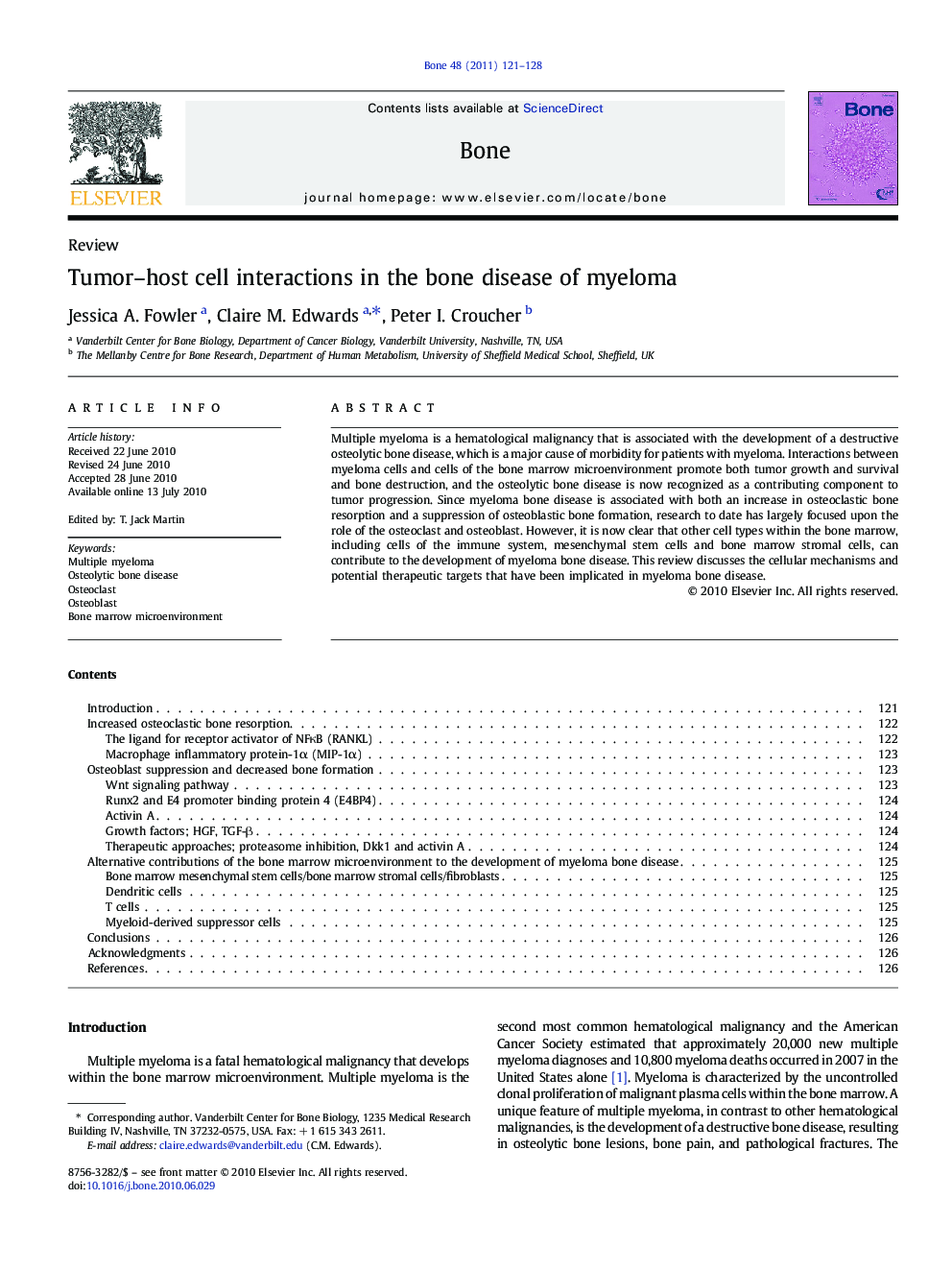| Article ID | Journal | Published Year | Pages | File Type |
|---|---|---|---|---|
| 2779821 | Bone | 2011 | 8 Pages |
Multiple myeloma is a hematological malignancy that is associated with the development of a destructive osteolytic bone disease, which is a major cause of morbidity for patients with myeloma. Interactions between myeloma cells and cells of the bone marrow microenvironment promote both tumor growth and survival and bone destruction, and the osteolytic bone disease is now recognized as a contributing component to tumor progression. Since myeloma bone disease is associated with both an increase in osteoclastic bone resorption and a suppression of osteoblastic bone formation, research to date has largely focused upon the role of the osteoclast and osteoblast. However, it is now clear that other cell types within the bone marrow, including cells of the immune system, mesenchymal stem cells and bone marrow stromal cells, can contribute to the development of myeloma bone disease. This review discusses the cellular mechanisms and potential therapeutic targets that have been implicated in myeloma bone disease.
